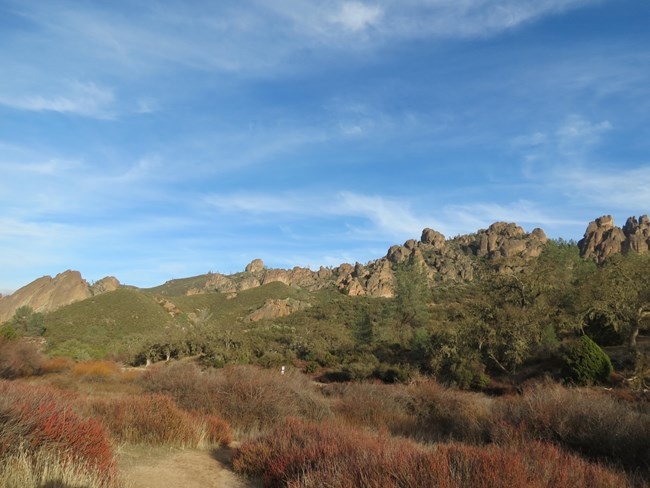
The Pinnacles Wilderness: A Place for Beauty, Reflection, and Preservation"Everyone needs beauty as well as bread, places to play in and pray in, where nature may heal and give strength to body and soul alike." Did you know that much of the area within Pinnacles National Park is designated as wilderness? This means that when you set foot on trails like the High Peaks, Chalone Peak, Juniper Canyon, North or South Wilderness, or even the Old Pinnacles Trail, you are hiking through areas protected not only by the laws that establish and safeguard our national parks but also by the Wilderness Act of 1964. This act grants Pinnacles Wilderness special protections from development, ensuring these lands are preserved and managed for their unique "wilderness values." Here, nature is kept in its most pristine state, offering an unparalleled experience of tranquility and natural beauty for all who seek refuge and renewal among these landscapes. What is wilderness?Wilderness, as defined by the Wilderness Act of 1964, is
Wilderness is physical landscapes, but can also be a spiritual landscape. John Muir, a 20th century naturalist, described the essence of wilderness as the freedom, solitude and the beauty of the mountains. To other people, wilderness can be likened to a great work of art or an outdoor cathedral. And to other people, it can be a place where their emotional and physical limits area tested as they enter areas where trails don’t exist, where help is hours or days away and the presence of another human being is the exception, not the norm. Wilderness areas have no roads, no power lines, and no accoutrements of civilization. Many parks have wilderness areas within their boundaries - - and Pinnacles is no exception, with about 80% of its 24,000 acres designated as wilderness. In this wilderness are the rock spires that give Pinnacles its name, as well as Chalone Peak, the highest peak in the Gabilan Mountains, creeks and canyons that are home to the endangered red-legged frog, night skies full of stars and other qualities too numerous to name. What use is wilderness?To many Americans, the word wilderness means a hotel with no room service, or an area where their cell phones don’t work. To others, it conjures up the mental image of barren landscapes, dotted with sickly looking plants and an occasional lizard. Or even snowscapes, with harsh winds and blowing snows, where nothing could ever live. This is far from the truth. Wilderness areas provide a wide variety of natural environments - - snow capped peaks, forests of green conifers as far as the eye can see, deserts of bizarre plants and animals, meadows of wildflowers, even coral reefs and other wonders of the oceans. Many of these areas are homes to threatened and endangered species of plants and animals. Most wilderness areas have been undisturbed by mankind, and therefore are a window into the past. Imagine the thrill of seeing areas as they were seen two or even three hundred years ago! And on the more spiritual level, places in the wilderness beckon to people as places where they can connect with themselves in solitude, they can reflect as they look into a mountain stream or even if they never set foot in a wild place, people need to know that there are places wild and untamed…
|
Last updated: October 29, 2024
